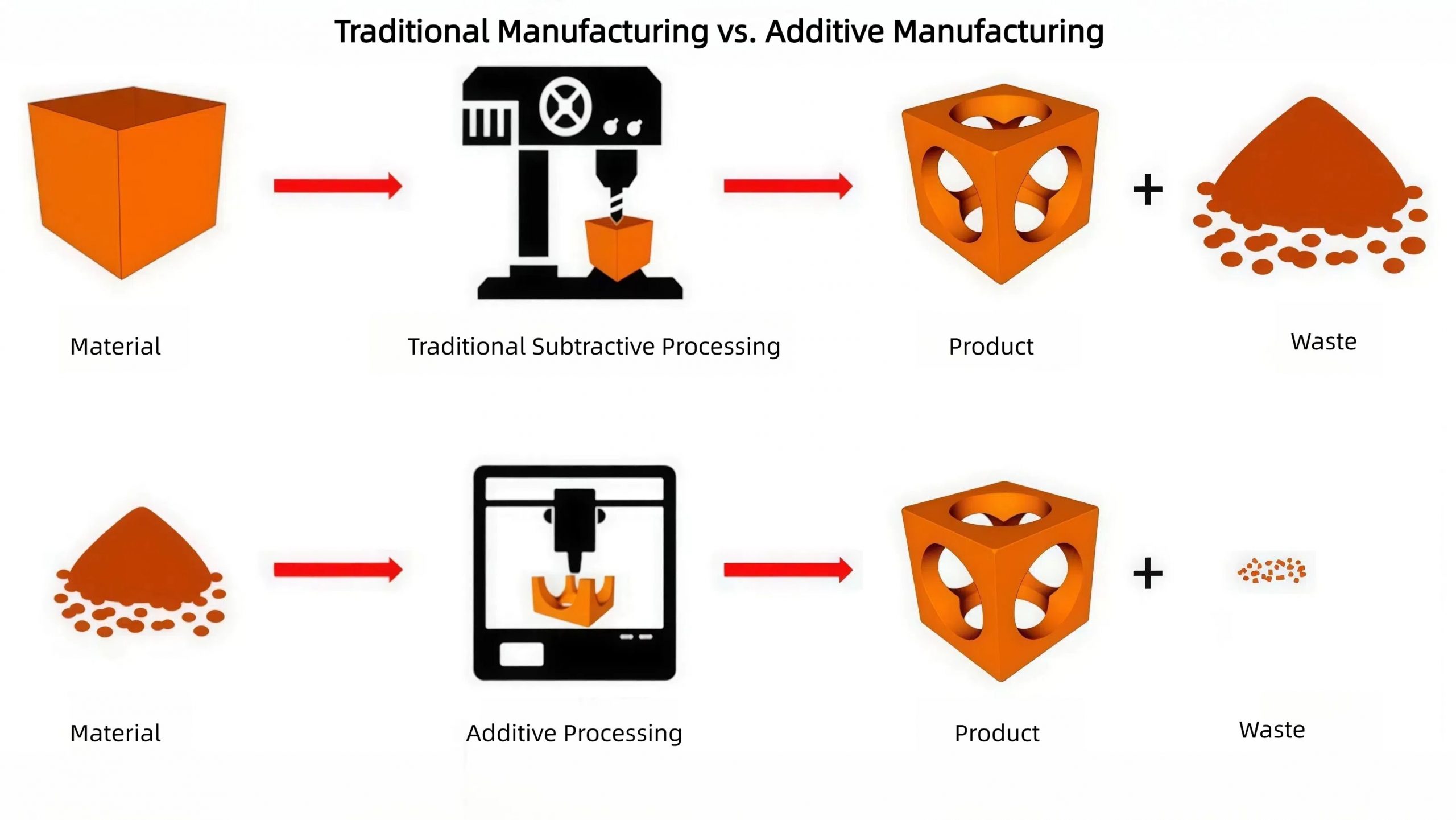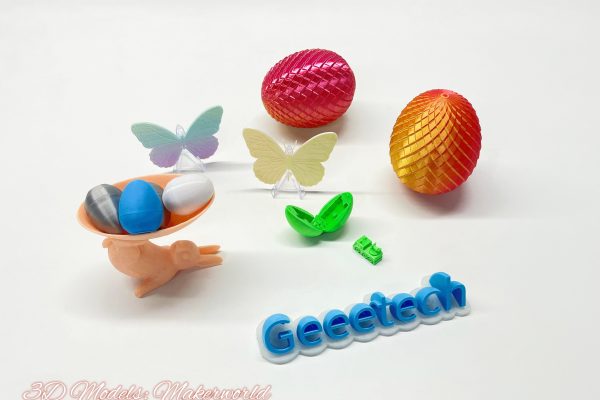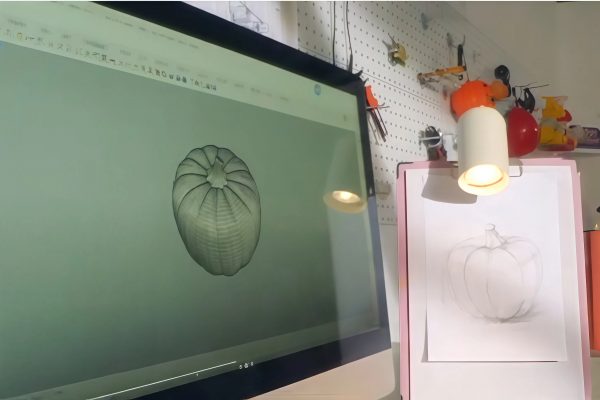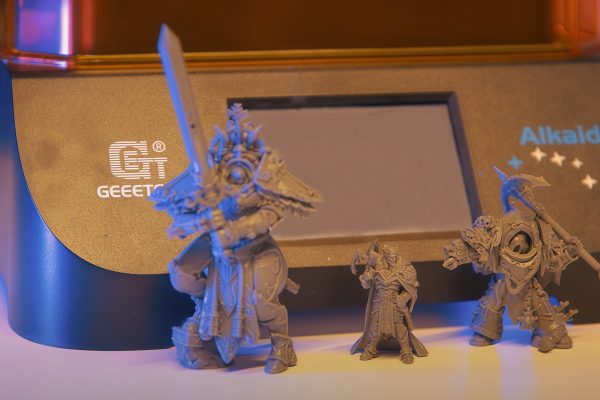It can sometimes be difficult to believe that it has only been 120 years since the first airplane took flight. The Wright brothers created the first manned airplane that successfully took off and landed safely again.
Since then, technology has progressed in significant ways, to the point where we are now able to 3D print parts that can be used in aerospace technologies. It is even possible to create 3D printed drone designs that work in practice, so let us take a closer look at this wonderful progress.
Traditional Manufacturing vs. Additive Manufacturing
For a long period of time, humans were limited to using what is known as subtractive and formative methods for manufacturing parts, but 3D printing and other modern technologies have completely changed the overall possibilities. Let us explore this in depth below.
Processes
Traditionally, we have been using these subtractive and formative processes, such as milling or drilling, as well as casting and forging, to create spare parts for the aerospace industry. This is a reliable and precise way of manufacturing parts, but it also has a high level of material waste and severe limitations on what can actually be produced.
- Traditional Processes:
Design → Molding/Programming → Material Cutting → Casting/Forging → Machining → Welding → Assembly → Inspection → Finished Product
Compared with modern additive manufacturing methods, such as 3D printing, it is now possible to build parts layer by layer, often using metal powders or strong polymers to achieve the same high-quality and reliable parts. It provides a greater level of freedom in terms of the design, and less waste of materials, which also extends to producing more lightweight parts comparatively.
- Additive Processes:
Digital Design → Slicing and Layering → Powder/Material Preparation → Layer-by-Layer Printing → Post-Processing → Inspection → Finished Product
| Dimension | Traditional Advantages | Additive Manufacturing(3D Printing) Advantages | Traditional Disadvantages | Additive Manufacturing(3D Printing) Disadvantages |
| Cost | Lower cost for mass production | Lower cost for small batches/complex parts | High initial investment in molds/tools | High equipment/material unit costs |
| Speed | Mature processes with stable efficiency (e.g., stamping) | Rapid prototyping, no molds required | Time-consuming mold development (months) | Slow per-unit printing speed |
| Flexibility | Strong stability in standardized production | Flexible design changes, supports customization | Difficulty in manufacturing complex structures | Large part size limited by equipment |
| Sustainability | Established material recycling systems | Less material waste, supports localized production | High energy consumption and scrap rates | Complex powder recycling processes |
As you can see from the above descriptions and charts, there are pros and cons to both methods, which is why one technology is not outright better than others. Instead, modern manufacturers now have more options, where each part can be produced by optimal technologies, resulting in lower costs and energy consumption, while improving the quality and durability.
Costs
And speaking of cost, this is an important factor for both manufacturing companies and hobby enthusiasts interested in the 3D aerospace printing niche. After all, the cheaper something is to produce, the more copies we can make, and the more we can experiment with new and cool ideas.
Speaking of additive manufacturing in aerospace terms, many critical parts can be produced with very small material losses, especially compared to the traditional methods, as these typically waste more than 50% of the raw materials used for aerospace parts. 3D printing, on the other hand, can almost always keep this figure down to way below 10% and in many cases even much further than that.
This not only helps save on materials being used, but also has the added benefit of reducing the overall weight of objects used. And this is crucial for aerospace manufacturing, as a lower weight means less fuel needed, which in turn reduces CO2 emissions and allows more passengers to fly on the same airplanes, increasing efficiency in many different areas.
Additive Manufacturing Enables Personal Flight & Emerging Tech
Some of the latest 3D printing ideas concerning personal flight revolve around additive manufacturing, since it has many advantages as discussed above. Hobby pilots and 3D printers are especially interested in areas such as eVTOL (Electric Vertical Take-Off and Landing) & UAM (Urban Air Mobility), as well as RC plane and drone concepts.
This is because it has now become possible to prototype and produce lightweight components from the comfort of our homes or small workshops, which can be used directly in these niche areas. So let us take a closer look at these two categories below.
eVTOL and UAM
eVTOL and UAM are two feathers of the same bird, as they both rely on lightweight components with durable structures that are typically produced with a heavy focus on optimizing the topology for added strength. And as every single gram of weight matters a lot, these lightweight parts are of extreme importance.
Additive manufacturing also makes it possible to combine the above with more advanced concepts, such as integrating mounts, manifolds or ducts directly into the parts themselves, making it possible to tightly pack motors, wires and other electronic components onto the parts directly.
And combined with the global community of creative minds designing and prototyping new ideas constantly, this area is currently booming with innovation and progress, making it an incredibly interesting time for anyone involved.
Drones and RC Planes
This also applies to hobby enthusiasts interested in remote-controlled drones and planes with many 3d printing ideas, where it has become possible to create custom designs that are able to sustain flight for extended periods of time, with a minimal cost to produce.
3D printing allows makers to turn ideas into reality easily, and there is no need to go through complex traditional production processes.
One maker 3D printed the frame of a drone. when a drone you designed to fly in the sky, the idea will no longer be idea, that is the reality of success.
Take a look at the image below, this 3D printed RC plane was built by a user on Reddit, who got the plans from a community dedicated to creating 3D printed aircraft of actual real-life models. The user then printed the parts individually, put them all together and added electronic components in order to achieve actual flight, all from the comfort of their own home.
Conclusion
Not only is 3D printing possible to create specific parts of aircraft, but many users have also successfully created their very own 3D printed drone and RC plane. And as additive manufacturing combined with aerospace manufacturing is an interesting and rewarding creation, it is a great 3D print project for anyone interested. And seeing as it can be achieved for low costs and within the comfort of your own home, we encourage readers to share their designs and results. Thanks for reading!







